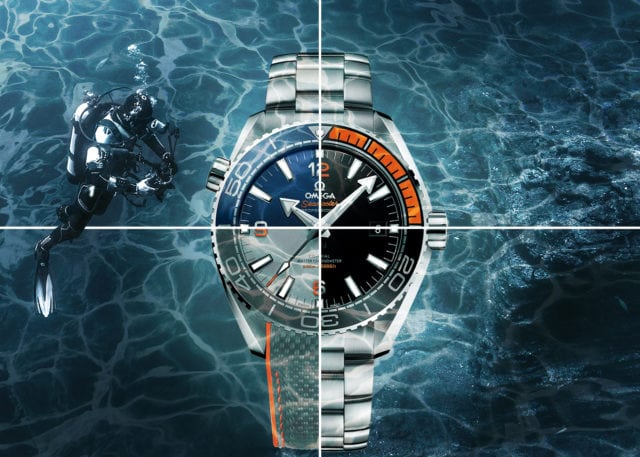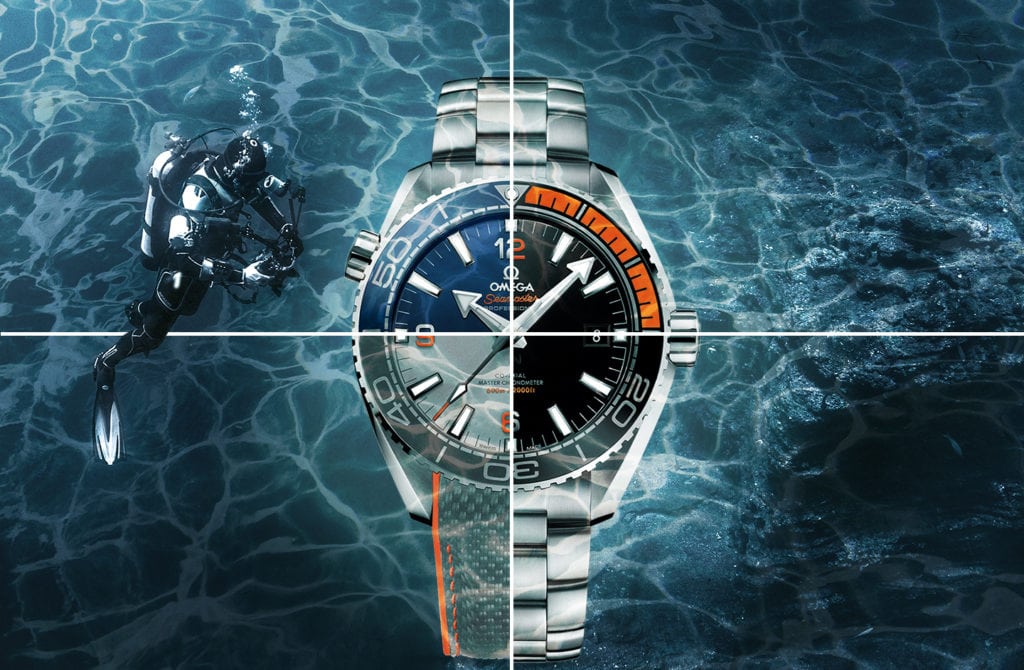
This article was originally published in 2018 and has been updated as of June 2020. To skip to the new sections, go to page three and begin with “More Orange, Tokyo Olympics 2020, & the 36th America’s Cup,” followed by “Ultra Deep & A World Record”
When texting with friend and fellow aBlogtoWatcher Zach Piña about the Omega Seamaster Planet Ocean, he messaged me the above quote that I think perfectly encapsulates why I find this collection so special. Introduced in 2005, it seems like the Planet Ocean has been around for as long as many of us have been watch lovers and enthusiasts, as a staple in the brand catalog that fits in as comfortably as the Speedmaster. In this article, I am going to go through the evolution of this luxury dive watch and track the various models, major milestones, and the short but robust history of this luxury dive watch.
Of course, in modern Omega history, the Planet Ocean came fairly late. The Seamaster Professional arrived in 1993 and was the watch first used in their second-greatest marketing feat (after the Speedmaster being the “Moon Watch,” of course). Indeed, the Seamaster Professional (SMP) adorned the wrist of Pierce Brosnan’s take on James Bond 007 in 1995’s Goldeneye (the Planet Ocean got this honor over a decade later in 2006’s Casino Royale). After the SMP 300 came the dressier Seamaster Aqua Terra in 2002, with the PO arriving in 2005 as the line’s higher-end sibling and rounding out the collection.
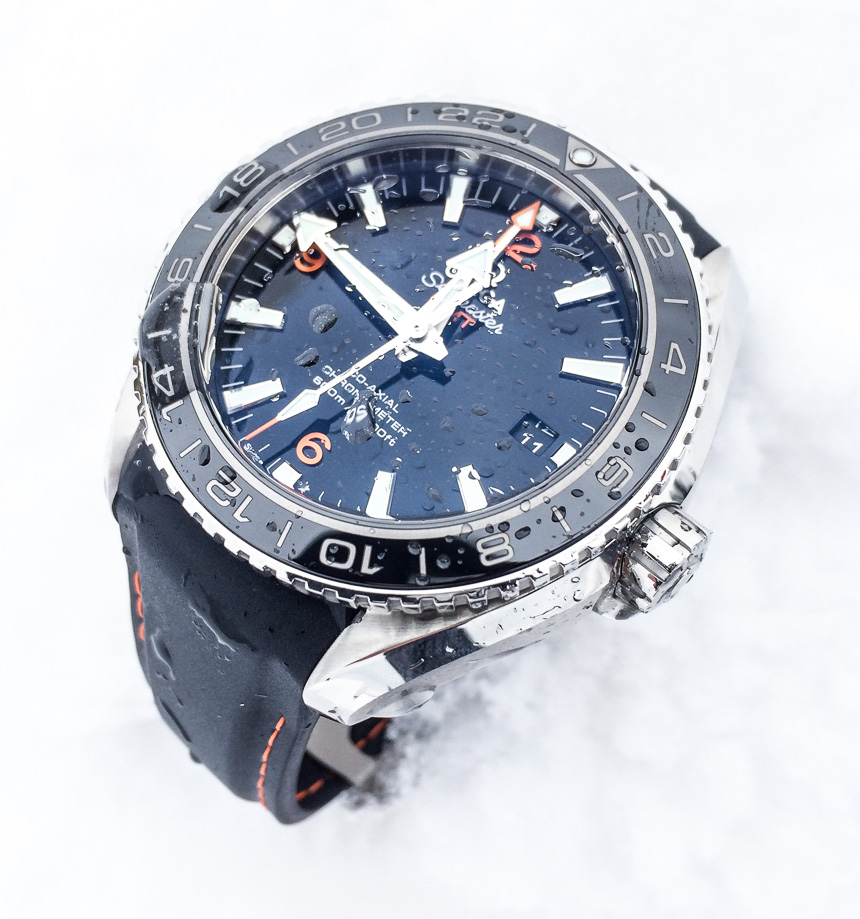
Too often, I find myself frustrated with the historical baggage so many watches I love are saddled with. What I mean by “baggage” can mean a lot of things: unwillingness to innovate because of a romanticized view of a piece’s history; watches focused on anniversaries or years commemorating landmarks; ad nauseam mention of iconic “effortlessly cool” celebrities who wore a watch 50 years ago (seriously, imagine it’s 1970 and watch enthusiasts are losing their minds over what Charlie Chaplin or Cecil B. Demille wore just before the Roaring Twenties). I love that the Planet Ocean line has to deal with none of this and can proudly present itself as a genuinely modern dive watch offering. It’s obviously important to note that that my points above are restricted to the Planet Ocean, not the brand as a whole because that’s an entirely different conversation altogether.
Omega created the Planet Ocean to be a modern luxury dive watch that would compete with the “tried and true” comparable offerings like the Rolex Submariner. It’s also worth noting that the Seamaster line overall has always been intended as more of a luxury piece in the body of a solid tool watch rather than a tool watch that eventually found its way on the wrists of well-heeled watch lovers.
One point of note, I am going to keep this list to non-precious metal models and will also not go through the history of the Planet Ocean chronograph because that discussion, or any discussion of a non-Speedmaster chronograph from Omega would require a thorough side by side look with the various Speedmaster references being made at any given point, and that is a very long conversation for another day. That being said, all the core references, along with the GMT models, and ultra-modern innovations like the Deep Black, will all be accounted for.
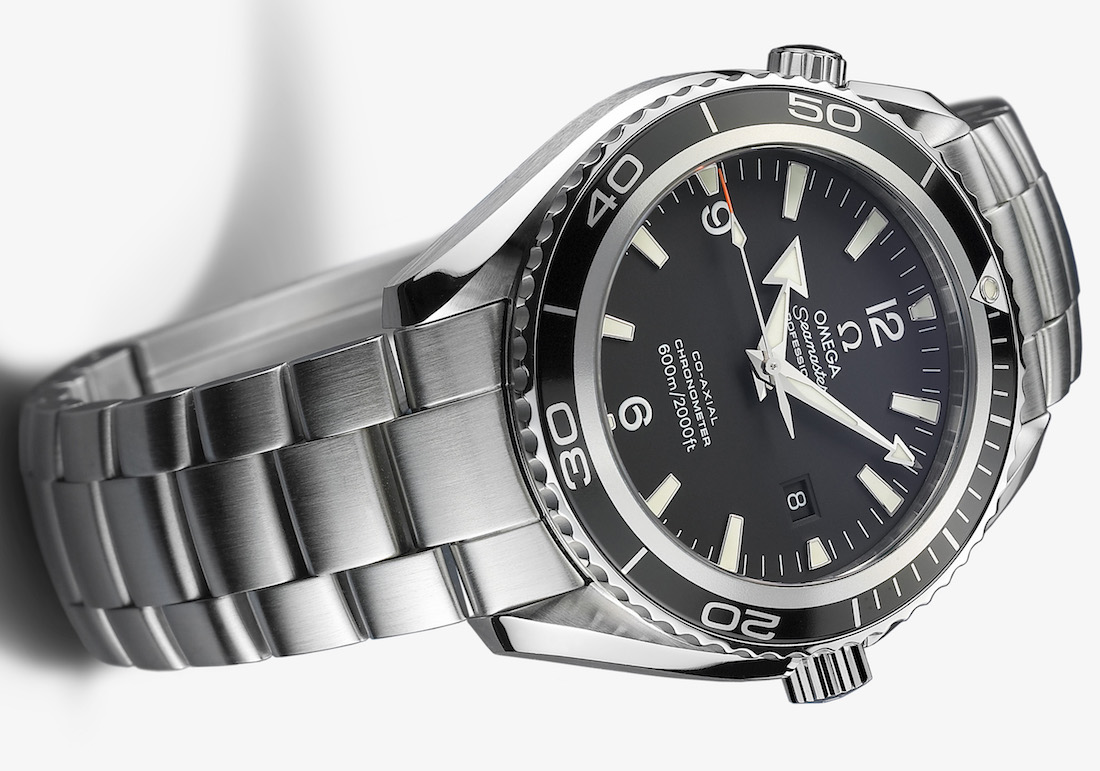
Omega Seamaster Planet Ocean First Generation (2005)
The Planet Ocean was the first diver the brand outfitted with their calibre 2500 movement that featured a co-axial escapement, and it came in three variations when it was launched, which is hilarious compared to the 27 models and 109 variations I see in the catalog now, some thirteen years later in 2018. The first Planet Oceans came in either 42mm or 45.5mm, with a black or orange bezel. The color orange is the unofficial color of the Planet Ocean line, claimed to be one of the most visible colors underwater (a claim I have heard refuted a few times, actually), but I have a feeling the aesthetic stamp was alluring to Omega as well.
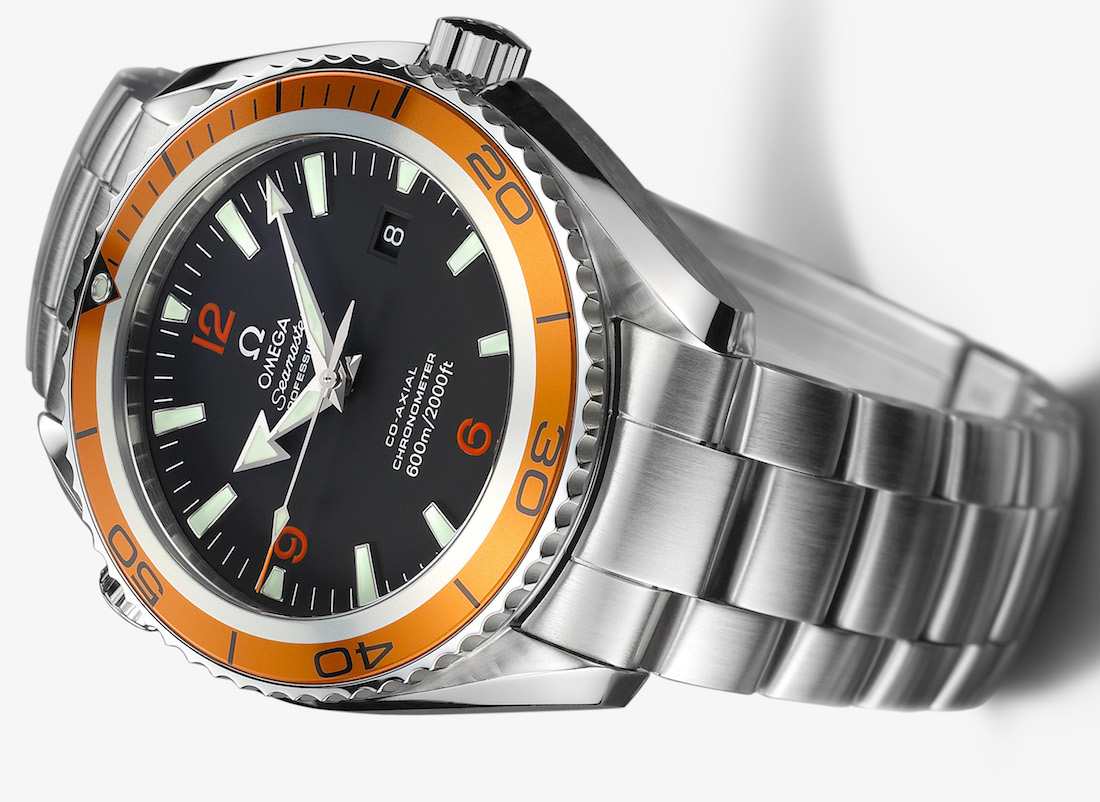
First Generation Design
The model that initially inspired the first collection back in 2005 was the Seamaster 300 ref. 165.024, which dated back to the 1960s. This can be a little counterintuitive when understanding the history of the Planet Ocean since they released a true to the original modern watch in the Seamaster 300 Master Co-Axial back in 2014. While nothing close to a vintage reissue, the first generation of Planet Ocean watches clearly wears this design influence on its sleeve. Or rather, on the design of its bezel, hands, and dial. The Planet Ocean asserted its own style, however, with an aggressively sporty look and touches like a helium escape valve. Later Planet Ocean generations would move on with the times in terms of material and style, securing the collection’s place as a luxury dive watch that is very much “of the moment” and isn’t afraid to evolve.
The first generation of Planet Ocean watches featured the aluminum bezel, about 1/3 of which was the untreated inner ring with the outer 2/3 being done in either black or orange. The 120-click coin-edged unidirectional bezel is one of the aesthetic markers and tactile standouts of the Planet Ocean line, joined with the signature helium escape valve at 10 o’clock which has carried through into every Planet Ocean watch. It’s a somewhat vestigial addition that can be about as divisive a feature as date windows, and personally I would probably like the option to not have a helium escape valve.
The matte black lacquered dial along with the faceted arrowhead hour and minute hands (with Super-LumiNova) make for a highly legible and attractive dial across the range. I love the Arabic numerals at 6, 9, and 12 o’clock and the date window is about as least intrusive as it can be since the background of the window matches the dial and there’s no magnifying lens over it. The simple, attractive design coupled with luxury finishes (that have been updated and upgraded with time, as this article will lay out) has been a cornerstone of the success of the Planet Ocean.
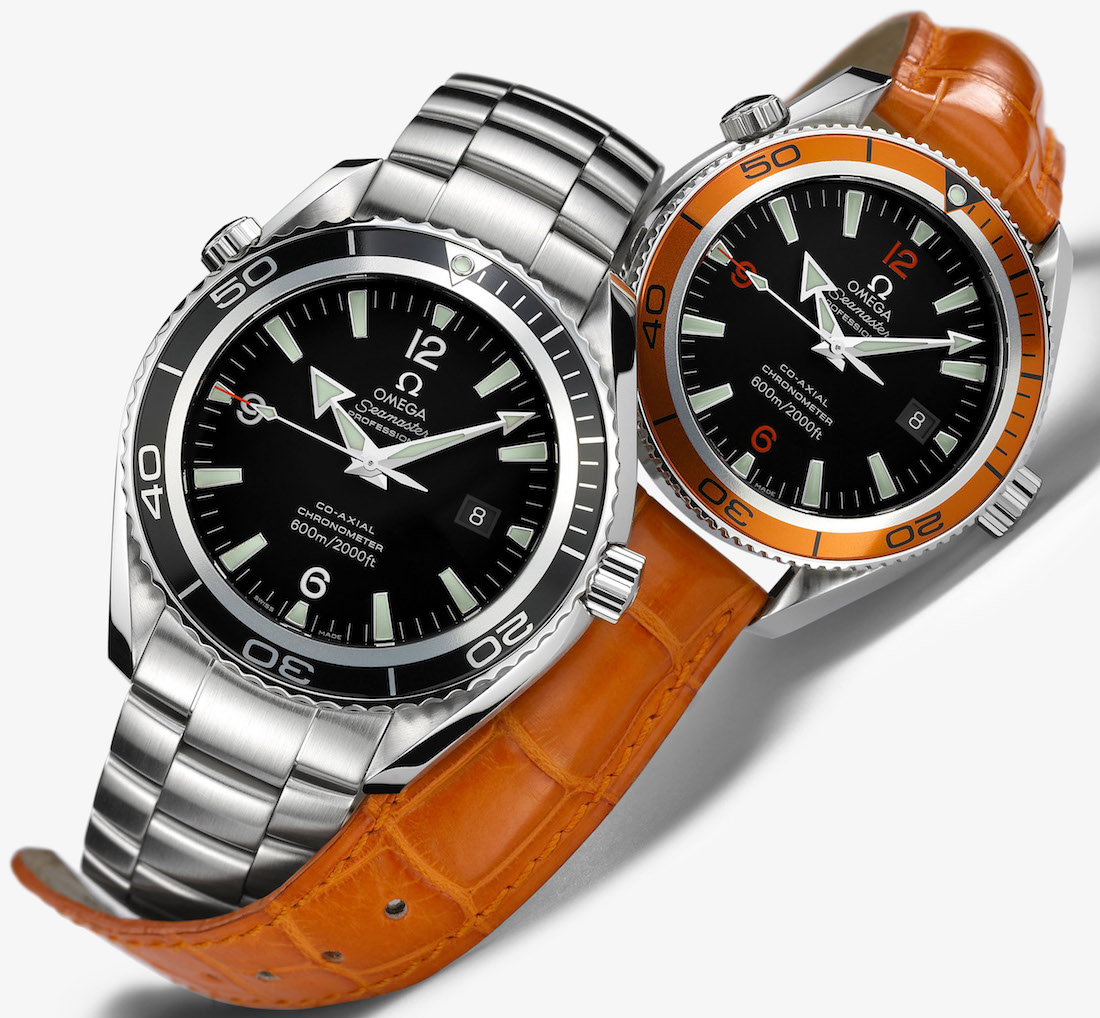
First Generation Case
Being the top-tier dive watch line from the brand, the Planet Ocean watches are all water-resistant to 600m (2,000 feet) – double the resistance of the Seamaster Professional of the time. Earlier models like these first-generation watches have a steel caseback with the engraved Seamaster logo featuring the recognizable seahorse, aka Hippocampus. Interestingly and of note, Omega claims that with the Helium escape valve unscrewed the watch is still decently water-resistant to 50m. I assume this is relevant if only to ease the minds of forgetful owners who like to play with their watches.
One final thing to mention about all Planet Ocean watches, old and new. These have always been thick watches, with some recent chronograph versions reaching a downright fat measurement of 18.87mm-thick. The 42mm version of the first generation Planet Ocean doesn’t approach this level of thickness at 14.5mm-thick, but the 45.5mm model is a hefty 17mm-thick. To compare, a 41mm-wide Seamaster Professional at the time would have been about 12mm-thick.
What’s always been impressive about the Planet Ocean is the fact that though it features a domed sapphire crystal, it has always remained highly legible due to the smart decision to use ample anti-reflective coating. More than one Planet Ocean owner I’ve talked to has pointed out how great the AR is, and I’d absolutely agree with them as I’ve always been impressed with the clarity on the dial of my own PO.
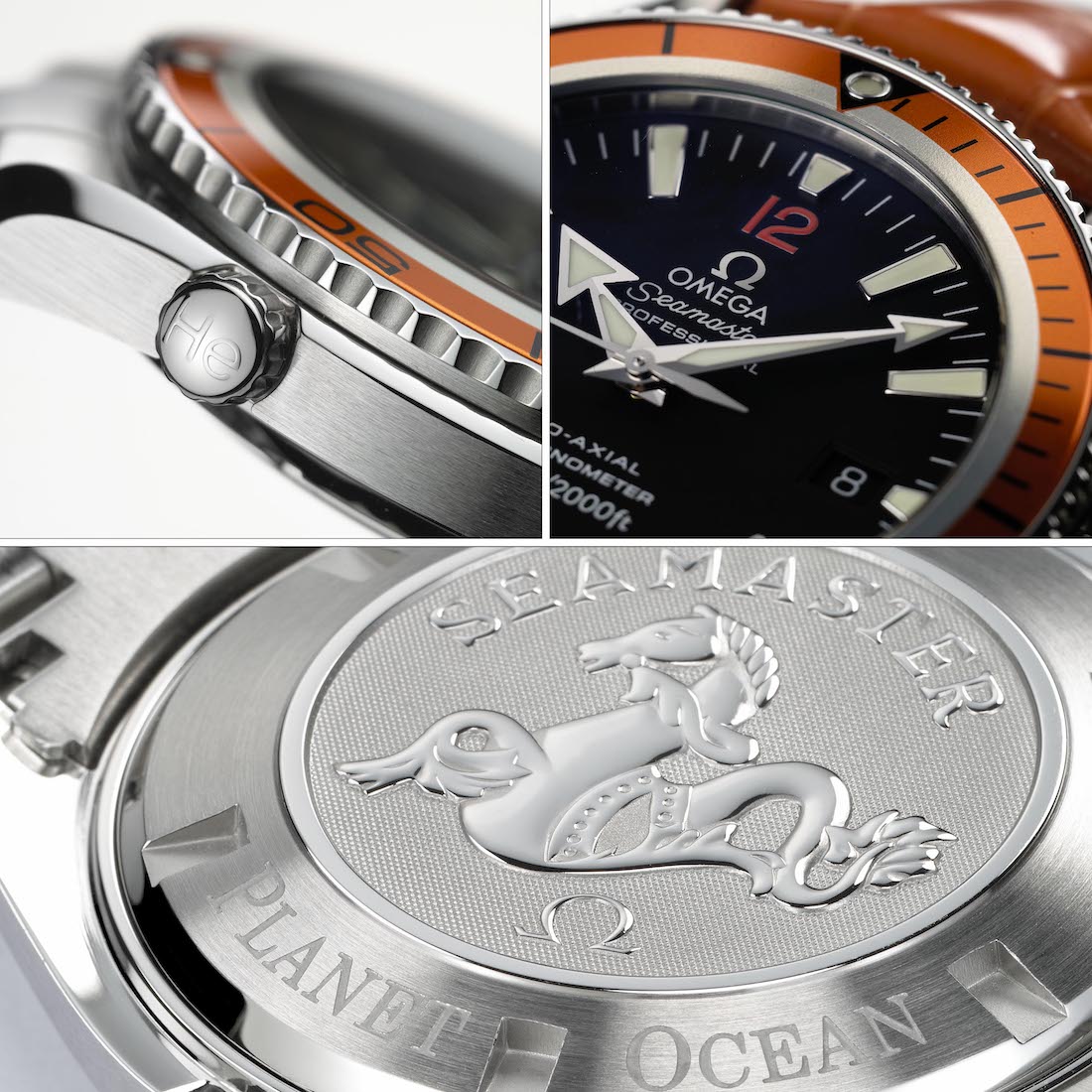
Omega Seamaster Planet Ocean + Calibre 2500 Co-Axial Movement
There was nothing completely new about the calibre 2500 movement when the Planet Ocean launched in 2005, though the movement had slowly been refined since 1999 when Omega purchased the co-axial technology from the legendary George Daniels.
The 48-hour power reserve calibre 2500 has been updated several times since it was released in 1999 (Rob Caplan of Topper got into the history here), and the first generation Planet Ocean was outfitted with the third iteration of the movement or the “C version.” The A version from 1999 was based on the earlier calibre 1200, which was based on an ETA 2892-A2 movement. The B version came soon after in 2000 and included an updated and more resilient palette bridge. Rob explains “The primary difference between B and C is that the C slowed down the movement from 28,800 vph to 25,200 vph. With the modern version of the 2500 calibre, the main feature benefit over a 1200 calibre is that it boasts a service interval around double that of its Swiss lever escapement predecessor.”
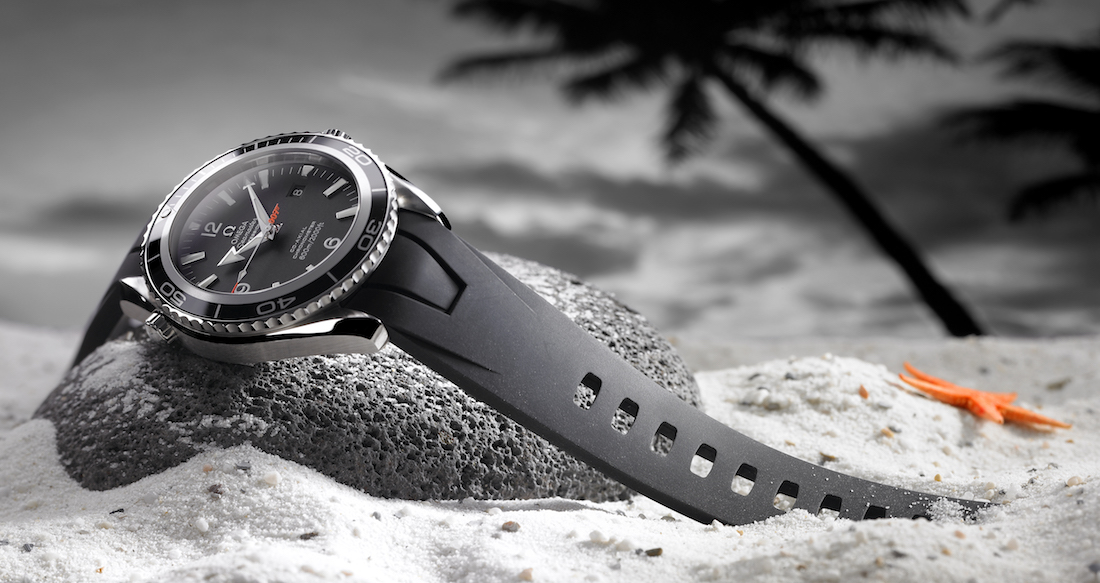
Planet Ocean First Generation Value
The larger 45.5mm versions (black bezel ref. 2200.50.00 and orange bezel ref. 2208.50.00) differed from the 42mm models in that they were significantly thicker at about 17mm-thick and had wider 22mm lugs a watch that size would suitably need. In terms of value there was never really a market preference that made one model into a “collector’s item” more than the other, as examples of either trade for between $3,100-$4,500 depending on condition and whether the watch in question comes with the box or papers. When new, a ref. 2900.50.91 (black bezel on rubber strap) retailed for $4,400.
While I can’t find reliable information to confirm an at-the-time MSRP for the 45.5mm PO, I do know that a ref. 2201.50 (black bezel on bracelet) retailed for $3,400 USD in 2006. Seamasters have a bit of a reputation for taking big knocks on resale value, but I’m seeing a few of these references for sale (with box and papers) between $3,100-$3,500. Of course, adjusting for inflation, the price of $3,400 in 2005/2006 would be closer to $4,300 in 2018.
Long story short, any generation of the watch shouldn’t be seen as an investment. It’s a mass-produced luxury product that Omega has no problem constantly updating and changing. Buy it because you love it.

Enter James Bond 007
The Omega Seamaster Planet Ocean connection with James Bond is indelible at this point, and naturally, the Planet Ocean found its way onto Daniel Craig’s wrist in 2006. As I mentioned in the introduction to this article, Bond had been wearing a Seamaster since 1995’s Goldeneye but had opted for a Seamaster Professional 300M for nearly a decade.
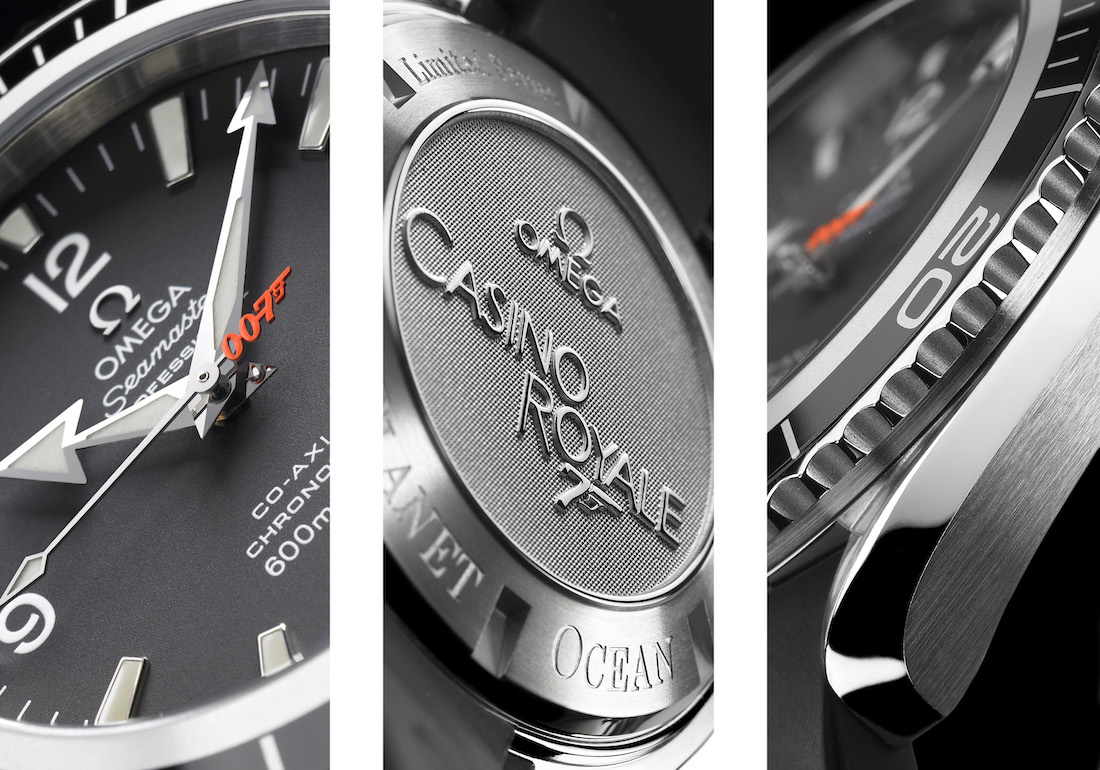
Casino Royale (2006)
In Daniel Craig’s debut foray as James Bond in 2006’s Casino Royale, he actually wears two Seamasters. During the more action-packed scenes earlier in the movie (I’ve seen the movie a handful of times, though admittedly I did not do any re-watches for this article) you see Bond wearing an Omega Seamaster Planet Ocean ref. 2900.50.91, which is the black bezel 45.5mm model on a rubber strap. Later, during the more “civilized” scenes in a Montenegro Casino, he wears a Seamaster Diver 300M which he likely had an easier time keeping under the cuff of his shirt since the PO is 17mm-thick and the Seamaster 300M is closer to 12mm- thick.
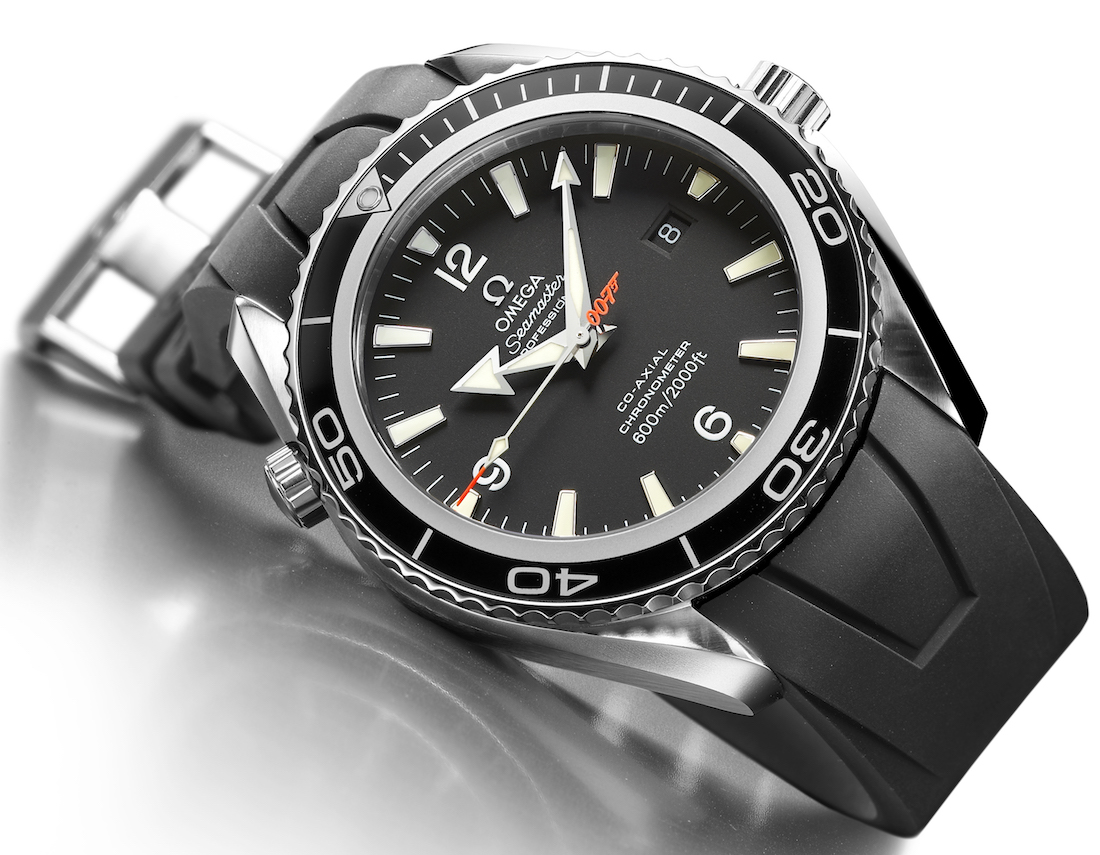
Of course, it wouldn’t be a complete exercise in co-branding without a limited edition watch. Though the Planet Ocean that Craig himself wore in Casino Royale would go on to fetch around $200,000 at auction, Omega released 5,007 pieces of the Planet Ocean ‘Casino Royale’ ref. 2907.50.91 back in 2006. It’s the same watch as the non-limited edition model and kept the Bond touches on the dial to a minimum with an orange “007” gun logo counterweight on the seconds hand. Turning the watch around you see the “Casino Royale” engraving on the caseback as well as what number out of 5,007 that particular watch is. These aren’t too hard to find, and you can routinely find a number of examples for sale between $4,500-$5,000.

Quantum of Solace (2008)
Moving to 2008, Craig reprised his role as 007 in Quantum of Solace, though the Planet Ocean he wears in the film didn’t have to share screen time with any other timepiece. This time Bond wore the smaller 42mm ref. 2201.50.00 with the black bezel on a steel bracelet. Naturally, there was a corresponding limited edition watch as well, though it came in the form of the bigger 45.5mm Omega Seamaster Planet Ocean 600m Quantum of Solace ref. 222.30.46.20.01.001 which also came in 5,007 pieces.
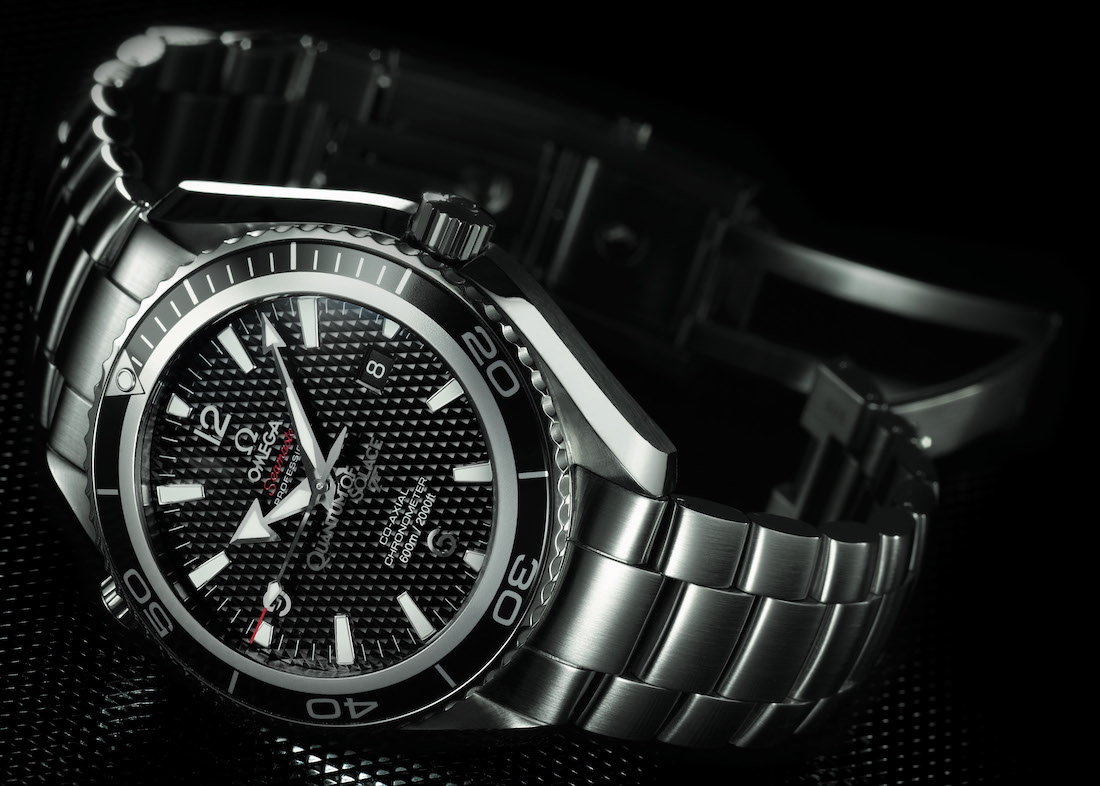
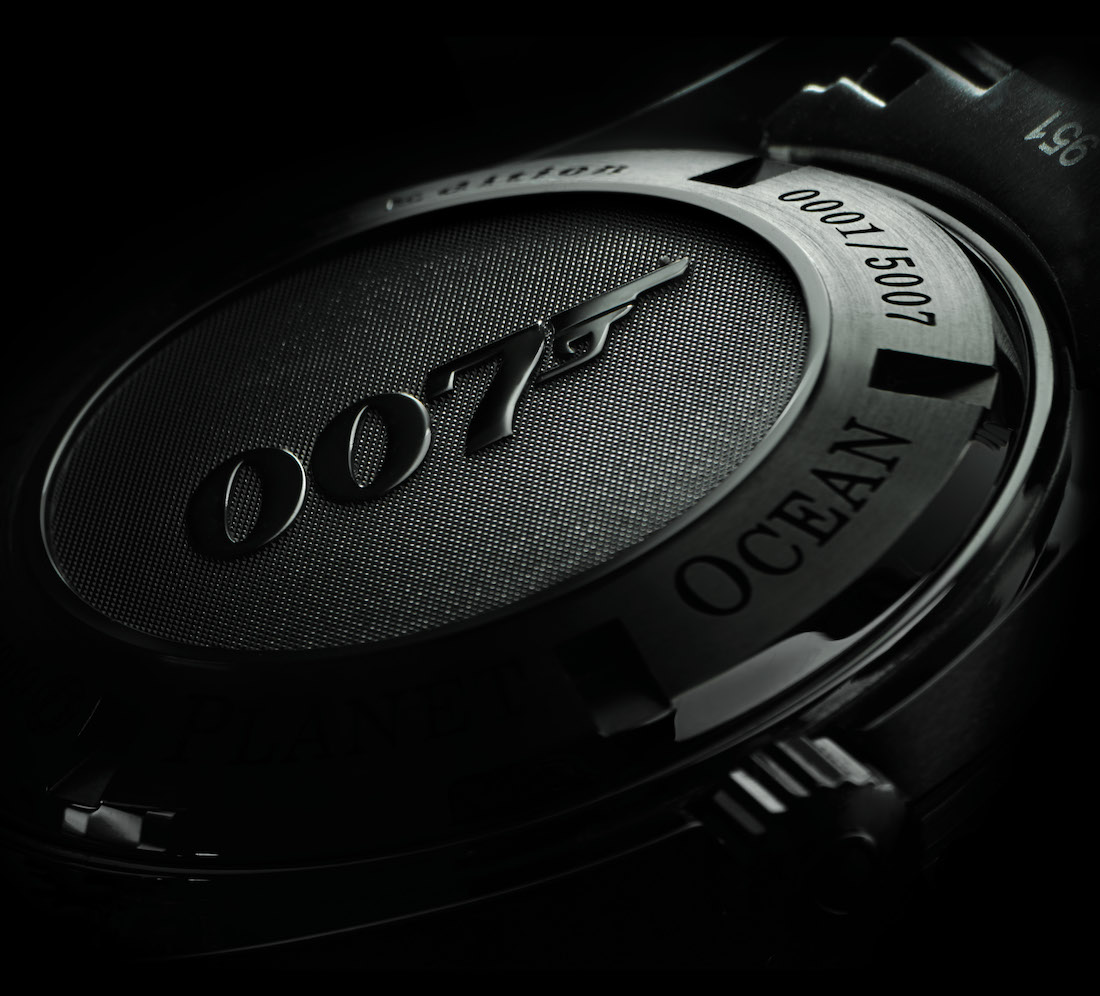
Omega went overboard with the James Bond branding here, with “Quantum of Solace” and the 007 pistol being laser engraved on the crystal. It’s the in-your-face branding but also the fact that with the “Omega Seamaster Professional” text at 12 o’clock and the movie branding right above the “Co-Axial Chronometer 600m/2000 ft” you have nonstop vertical text between 12 and 6 o’clock. I do like what Omega calls the “Walther PPK grip texture” on the dial (presumably designed after the grip on Bond’s pistol of choice) as it adds a unique texture. On the caseback you’ve got the 007 logo. It’s cool if you’re a fan, though Quantum of Solace doesn’t really even rank anywhere near the top of Craig’s Bond films. These pieces hit the market relatively frequently, and fetch something between $4,500-$5,500.
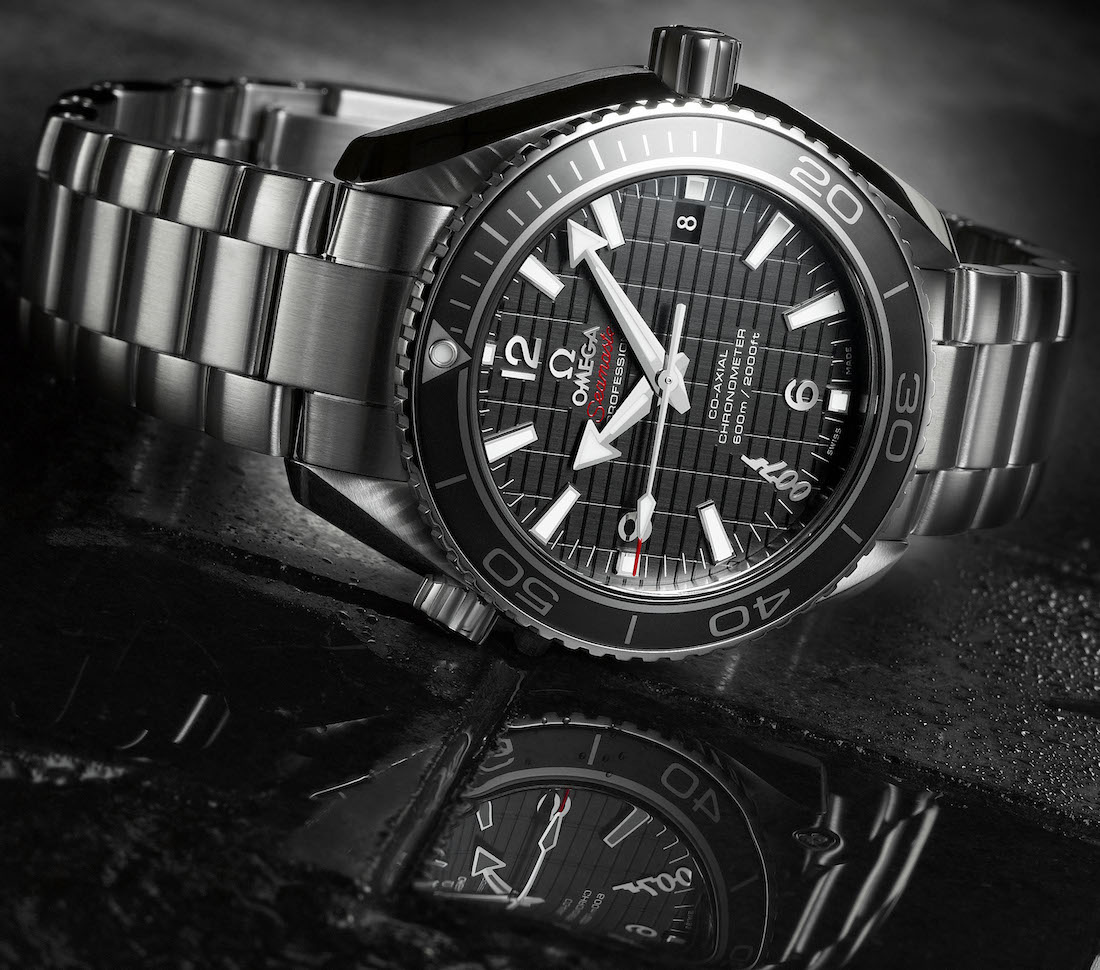
Skyfall, or Teaching an Old Dog New Tricks (2012)
After a four-year break came 2012’s Skyfall which, along with Casino Royale, is one of my favorite modern Bond films. A story about human intelligence facing fading relevancy in a rapidly digitizing world, the film presents a perfect metaphor for the role of mechanical wristwatches in that same changing world. Subtly turning the cliche on its head, someone says “old dog, new tricks” in the affirmative sense, so an old dog can learn new tricks. Another good horological metaphor, since this Bond wears the second generation of Seamaster Planet Ocean watches (released in 2011) with “new tricks” like an upgraded movement in the in-house caliber 8500 and a ceramic bezel.
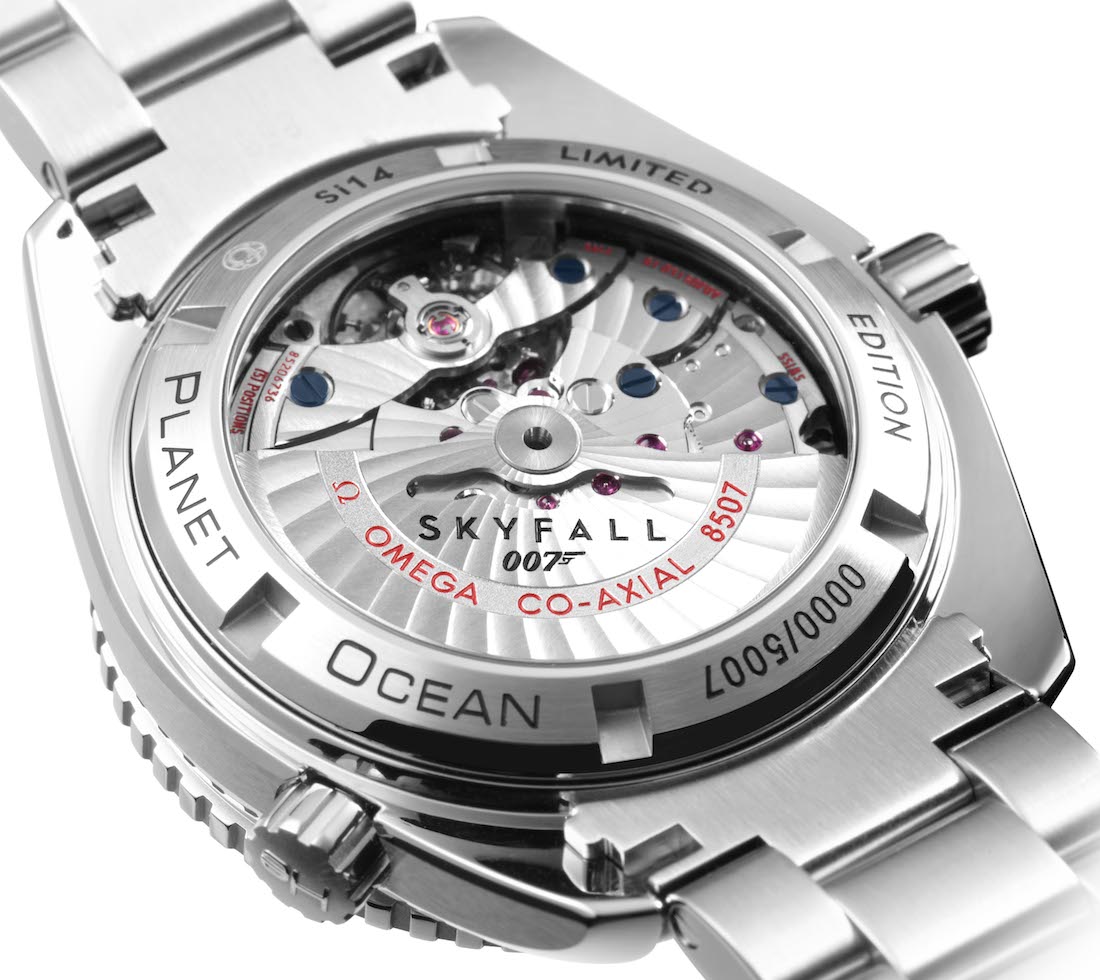
The limited-edition watch released for Skyfall was the Omega Seamaster Planet Ocean Skyfall ref. 232.30.42.21.01.004 which came in the smaller 42mm case. Fortunately, Omega pulled back from the over-branded Quantum of Solace Planet Ocean by having a fixed 007 logo at the 7 o’clock position and a checkered black matte dial. Turning the watch over, the engraved steel casebacks of previous models are gone, switched out for an exhibition caseback with a relatively subtle “Skyfall 007” printed on the rotor of the new Caliber 8507 movement. Naturally due to the updated model, these trade for more than prior Bond Planet Oceans with current examples asking between $6,500-$7,200.
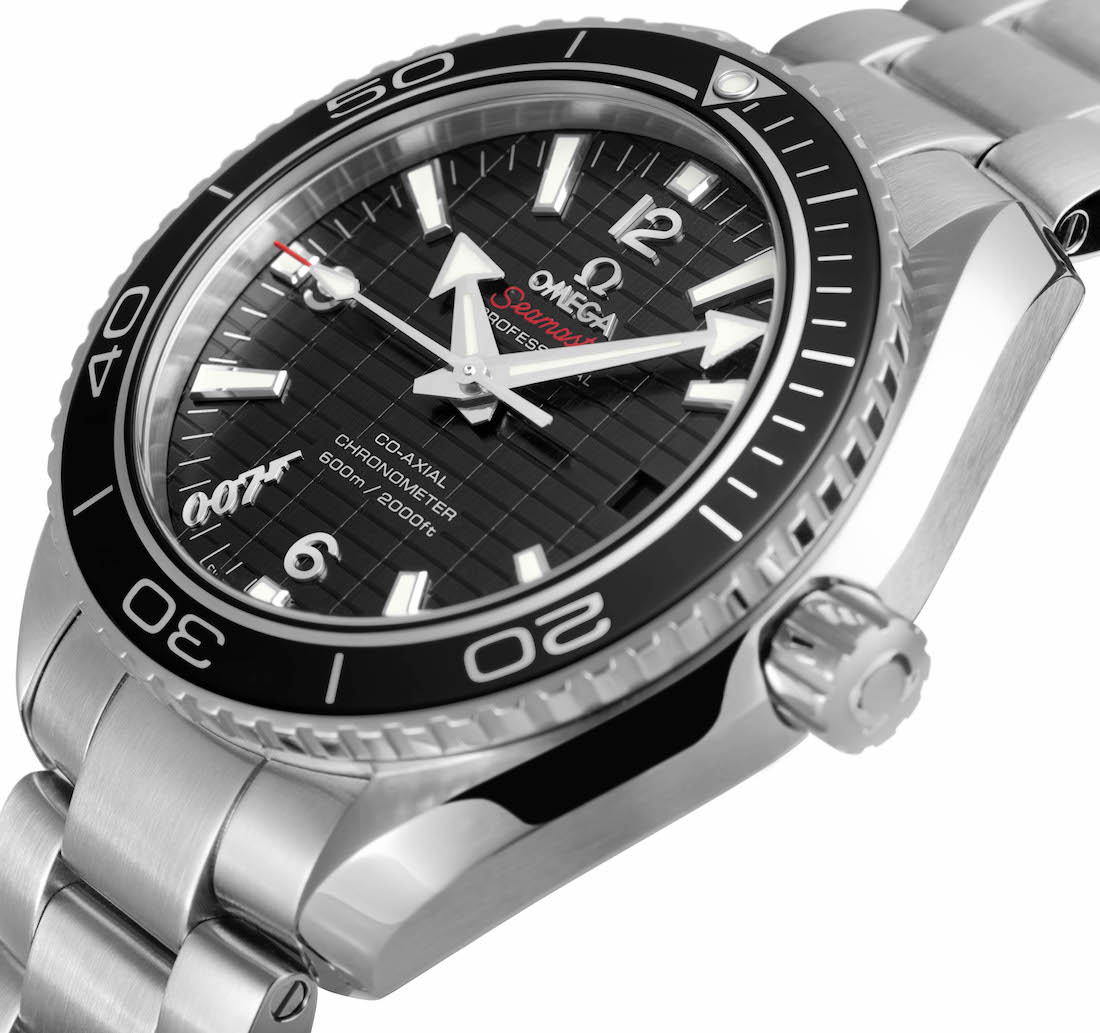
An interesting tidbit is the fact that the blue-dialed Aqua Terra that Bond wears in Skyfall (non-branded) tends to fetch a real premium with collectors. It’s not a Planet Ocean, but the reference 231.10.39.21.03.001 should at least be noted in any discussion of modern Bond and Omega. Let’s now exit the world of James Bond and get back to reality. To begin, we need to look at the 2009 limited edition Planet Ocean watch that’s both the gateway to the line’s second generation as well as one of the most desired examples of any Planet Ocean produced.

